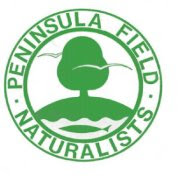
For more information on the Carden Alvar check out Ron Pittaway's excellent birding guide found on the OFO site. Ron also wrote the Hot Spots Near You article for the Carden Alvar in Birder's World Magazine.
Jean and I travelled to Orillia (less than an hour west of Kirkfield) the day before to avoid a 2.5-3 hour early morning drive. Saturday evening we explored the area east of Lake Simcoe and found an Osprey nest atop a utility pole. Little did we know that we would encounter quite a few more the following day.


The group met in Kirkfield for the OFO trip led by Jean Iron. Assisting Jean on the day were Ron Pittaway, Ron Tozer and Eleanor Beagan. Wylie Road was our first stop and Ron Pittaway describes it as "the best early summer birding road in southern Ontario".
While parking the car I immediately noticed the Poison Ivy along the roadside. Where the side of the gravel road ends and the green vegetation starts, the three leaved plant is quite common. When looking at a lifer bird, pay attention to the location of your feet.
The group walked north along Wylie Road and I easily ticked 3 species of blackbird which include our first grassland species of the day, Bobolink.

The purplish hues in the field are that of the wild flower Prairie Smoke. The alvar provides the environment required for the prairie species to grow.

Not too long into the hike Jean and I ticked our first spare (addition to the year list) of the trip. An Upland Sandpiper was spotted on a fence post along the east side of Wylie Road. Soon after, Ron Tozer's discussion of the nesting boxes along the road was interrupted by one of the target birds. Shrike! It was distant but Jean and I had some great views of our first lifer of the day through our scope. The Loggerhead Shrike entertained the group as it disappeared and reappeared moments later atop a new perch. In the same area, we observed our second spare of the day. A Brown Thrasher! This was a very worthy tick. Despite attempts at observing this species last year it was not added to the 2009 list. And then another spare. Grasshopper Sparrows (3) were spotted in a few locations along the road, including during our stop at the Windmill Ranch viewing area.
Further north along Wylie Road the scrub to our left became denser. A song that I never heard before was coming from this area. The trip leaders informed us that the bird singing was a Golden-winged Warbler. If I was able to get on it, I would have another lifer. Another birding couple knew Jean and I needed this species and quickly grabbed us when they had it in their scope. It was a rear view of the bird as it sat near the top of a tree so those of us observing the warbler could only see a yellow crown and what appeared to be a black ear patch. When Ron Tozer got on the bird he quickly informed all that it was a Chestnut-sided Warbler. The streaking on the back indicated that this was not the lifer bird we thought we had. All was not lost though. A Golden-winged Warbler was still singing somewhere in the scrub. This time, we would get on the right bird. A male Golden-winged Warbler in all his glory was on some bare branches and provided a great view for all.

Yes, black throat; black ear patch bordered in white; yellow crown and wing patch. This was definitely a Golden-winged Warbler! Lifer #295.
You can see that I could not contain my excitement after viewing the lifer warbler.

After walking 2.5 kilometres the group reached the Sedge Marsh. Wylie Road cuts through the marsh and continues north until it reaches Alvar Road. The marsh is a reliable spot for finding Sedge Wren. The first wren observed though was a Marsh Wren, another spare for the day. Another spare was ticked as 2 American Bitterns were observed flying low through the reeds west of Wylie Road. We soon had our third lifer of the day. A Sedge Wren was singing from the top of a bullrush. It would move to a bush but we still had great views of lifer #296.
Further up the road, Jean Iron picked out the call of an Alder Flycatcher. This would be another lifer if we found it. Not only did we find it (lifer #297) but Jean, "My Jean" (I call her when on trips lead by Jean Iron), was first to see it through her bins and describe its location to the trip leader. This was turning out to be a great day! Four lifers along one stretch of road. Ron Pittaway is right. This is a great rural road for birding! It was time to head back to the cars and stop for lunch at the Kirkfield Lift Lock.


After lunch we drove the cars to Shrike Road to observe a Great Blue Heron rookery. In the pond we found a rare Ontario species. It was not avian though. It was a Blanding's Turtle. A lifer reptile!

We turned around on Shrike road and headed east along McNamme Road. As the line of cars was coming to a stop, Jean Iron flushed a Ruffed Grouse, almost hitting it. Most of the group would not observe the spooked bird. A miss for Jean and I. The group scanned the fields south of the road for more target birds. Upland Sandpiper (2) were seen and another distant Loggerhead Shrike. Great to see that there may be 2 nesting pairs in the area.
Our next stop was at the causeway on Canal Lake. Here we found 2 pairs of nesting Osprey at both ends of the causeway. While stopped at the north side of Canal Lake we observed a few gulls (Herring and Ring-billed) and a Common Loon. Two more loons (a pair) were observed on the south side of Canal Lake.
From Canal Lake the group headed south to Prospect Road. The road runs south from Kawartha Road 48 and takes you through Prospect Marsh. We stopped at the marsh to search for bitterns, rails and wrens. Marsh Wrens were popping up out of the reeds and singing from the top of bullrushes. A favourite perch I assume.

Both Virginia Rail and Sora were calling but were well hidden from the group's view. OK. This is where counting a bird gets tricky. At least for me. A Virginia Rail is a lifer so it also needs to be seen by both Jean and I to be added to our lists. We had only observed Sora twice before this trip. As you can see, we have not seen many Sora at all. Should I count the Sora calling in Prospect Marsh? Ron Tozer brought his "old school" tape player and played recordings of both the Virginia Rail and Sora calls. This caused some movement in the reeds behind the group (west side of the road). A member of the group finally observed the bird as it quickly moved through the reeds. Patience paid off and both Jean and I were able to observe our 5th lifer of the day as it ran between clumps of reeds. Virginia Rail! Lifer #298. The Sora continued to call from the marsh on the east side of the narrow road. At times it was right in front of me but not one of us could get on it. Jean decided we should count the Sora and I totally agreed. It was less than 2 metres from us while calling. Another spare in the Carden Alvar.
Our last stop was further south on Prospect Road. Stopping in an area filled with scrub we searched the field, listening to a song Jean and I heard for the first time two weeks ago. Our last observation of the day was a Clay-colored Sparrow.
A great day was had by all. Jean and I observed a total of 48 species in the Carden Alvar. Considerably less than the number (75 species) tallied by Ron. If only one member of the group sees a bird it is still added to the trip list. As you can see there were some misses.
A Black-billed Cuckoo was only seen by Ron and one other OFO member while we were at the causeway. It flew away before Ron could attract the attention of the rest of the group. Another bird missed by Jean and I was an Eastern Towhee on Wylie Road. Hopefully we can tick one while birding in the Niagara Region.
In total, 12 species were added to our year list. 3 misses, 12 spares and 5 lifers. A great day of birding which might not be matched for quite some time. This trip may become an annual one. It should if I want to continue a 200+ species list every year. Of course I still have to accomplish that for the first time this year. There are a number of shorebirds that still need to be ticked. Looks like the next OFO trip we will attend will be at Rock Point in August. Perhaps a Baird's or Buff-breasted Sandpiper will be our 300th lifer. I think I can wait though. I really don't want June and July to go by that fast.








No comments:
Post a Comment